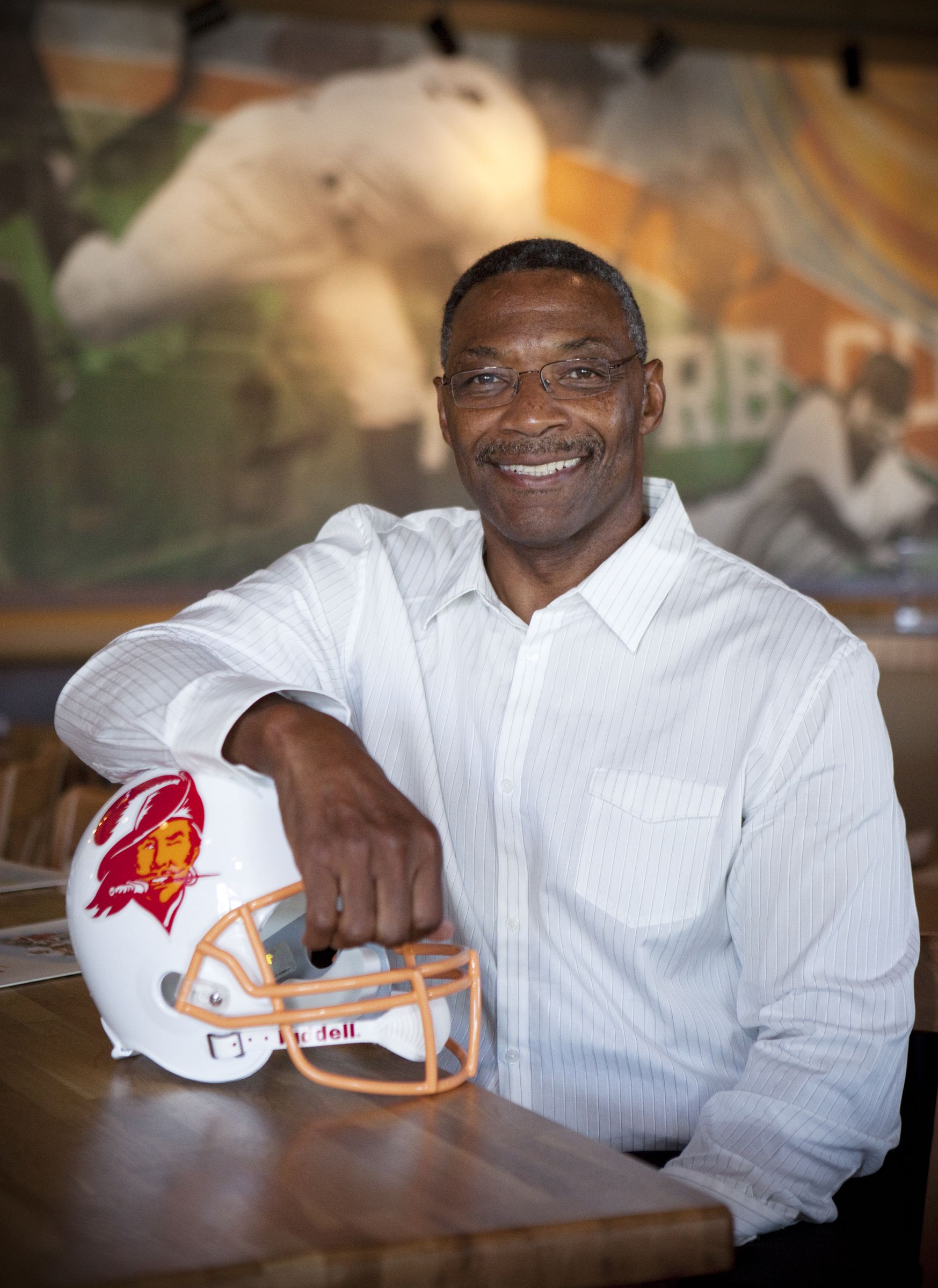Lee Roy Selmon’s story transcends football. It’s a tale of character, community, and the enduring impact of a life lived with humility and excellence. His journey, from humble beginnings on an Oklahoma farm to the Pro Football Hall of Fame, is one of remarkable achievement and unwavering integrity.
The Rise of a Gridiron Giant
Lee Roy Selmon, along with his brothers Dewey and Lucious, honed his dedication and teamwork skills on their family farm in Eufaula, Oklahoma. This upbringing likely laid the groundwork for their future gridiron success. Their shared passion for football blossomed at the University of Oklahoma, where the “Selmon Brothers” became a legendary defensive force. They led the Sooners to two national championships, and Lee Roy’s unique blend of athleticism and instinct caught the attention of NFL scouts. For a deeper look at successful athletes, check out Lil Durk’s net worth and Lil Duval’s net worth, showcasing achievements in other fields.
From Sooner to Buccaneer: The 1976 Draft
The 1976 NFL Draft marked a turning point for both Selmon and the Tampa Bay Buccaneers. The fledgling franchise, struggling to establish itself, selected Selmon first overall. This gamble paid off exponentially. Selmon wasn’t merely a good player; he was a transformative force. As a defensive end, he terrorized opposing quarterbacks, disrupting offenses with his speed and power. He earned six Pro Bowl selections, a testament to his consistent excellence, and was named Defensive Player of the Year in 1979. His impact was pivotal in turning the Buccaneers from a league laughingstock into a competitive team that even clinched the NFC Central Division title in 1979. This rapid turnaround, occurring just four years after the team’s inception, suggests Selmon’s influence was far-reaching and instrumental in establishing the Buccaneers’ identity.
A Legacy Beyond the Game
Selmon’s greatness extended beyond the football field. He was admired for his quiet dignity, generosity, and unwavering commitment to his community. He embraced his role as a role model, understanding that it encompassed more than athletic prowess. After retiring from professional football, he dedicated himself to philanthropic endeavors and served as the Assistant Athletic Director at the University of South Florida, mentoring young athletes. This dedication to service underscores his character and commitment to making a positive impact.
Honoring a Hero
Selmon’s impact on Tampa Bay is commemorated by the Lee Roy Selmon Expressway, a constant reminder of his contributions to the region. In 1995, he became the first Tampa Bay Buccaneer inducted into the Pro Football Hall of Fame, a fitting tribute to his remarkable career. His retired number 63 jersey hangs in Raymond James Stadium, a permanent symbol of the man who helped shape the Buccaneers into the team they are today.
The Tampa Bay Legend: Answering the Key Questions
What Team Did Lee Roy Selmon Play For?
Lee Roy Selmon dedicated his entire nine-season NFL career (1976-1984) to the Tampa Bay Buccaneers. As their first-ever draft pick, he became a six-time Pro Bowler, a 1979 All-Pro selection, and the franchise’s first Hall of Fame inductee, solidifying his legacy as a Tampa Bay icon. His presence elevated the team, transforming them from perennial underdogs into a competitive force.
What Happened to Lee Roy Selmon?
The football world mourned the loss of Lee Roy Selmon in 2011. He suffered a massive stroke and passed away at the age of 56. His death was a stark reminder of life’s fragility. While his playing career began in Eufaula and flourished at the University of Oklahoma, his professional legacy was forged with the Buccaneers. His passing underscores the importance of appreciating the individuals who enrich our lives and striving to make a positive impact, just as Selmon did.
How Good Was Lee Roy Selmon?
Quantifying Lee Roy Selmon’s greatness is a complex endeavor. His six Pro Bowl selections and 1979 Defensive Player of the Year award speak to his on-field dominance. His inductions into both the College Football and Pro Football Halls of Fame further cement his legacy. However, statistics only tell part of the story. His true impact lies in his ability to transform the Buccaneers’ defense, his leadership, and his unwavering sportsmanship. He was a transformative figure who elevated his team and left an enduring mark on the game.
Selmon’s Statistical Legacy
While sacks weren’t officially recorded until 1982, Selmon’s impact is evident in other metrics and anecdotal evidence. He recorded a career-high 11 sacks in his final season (1984). Researchers continue to explore ways to assess historical players, considering the game’s evolution. Selmon’s complete career statistics can be found on Pro-Football-Reference.com.
| Accomplishment/Milestone | Year(s) |
|---|---|
| Drafted 1st Overall | 1976 |
| NFL Career | 1976-1984 |
| Pro Bowl Selections | 1979-1984 |
| All-Pro Selection | 1979 |
| Defensive Player of the Year | 1979 |
| College Football Hall of Fame | 1988 |
| Pro Football Hall of Fame | 1995 |
| Passing | 2011 |
Lee Roy Selmon’s story is a testament to the power of character, dedication, and the pursuit of excellence. He wasn’t just a great football player; he was an inspiration to his community and a true embodiment of the spirit of the game. His legacy continues to resonate, reminding us that true greatness extends beyond the field and into the lives we touch.










